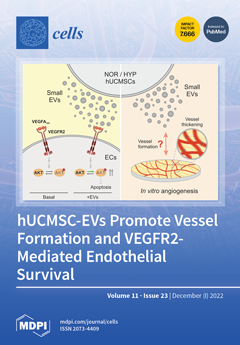Amyotrophic lateral sclerosis (ALS) is a neurodegenerative disease with no effective cure. Astrocytes display a toxic phenotype in ALS and contribute to motoneuron (MN) degeneration. Modulating astrocytes’ neurotoxicity can reduce MN death. Our previous studies showed the beneficial effect of mesenchymal stem cell (MSC) administration in SOD1
G93A ALS mice, but the mechanisms are still unclear. We postulated that the effects could be mediated by extracellular vesicles (EVs) secreted by MSCs. We investigated, by immunohistochemical, molecular, and in vitro functional analyses, the activity of MSC-derived EVs on the pathological phenotype and neurotoxicity of astrocytes isolated from the spinal cord of symptomatic SOD1
G93A mice and human astrocytes (iAstrocytes) differentiated from inducible neural progenitor cells (iNPCs) of ALS patients. In vitro EV exposure rescued mouse and human ALS astrocytes’ neurotoxicity towards MNs. EVs significantly dampened the pathological phenotype and neuroinflammation in SOD1
G93A astrocytes. In iAstrocytes, exposure to EVs increased the antioxidant factor Nrf2 and reduced reactive oxygen species. We previously found nine miRNAs upregulated in MSC-derived EVs. Here, the transfection of SOD1
G93A astrocytes with single miRNA mimics reduced astrocytes’ activation and the expression of neuroinflammatory factors. Moreover, miR-466q and miR-467f mimics downregulate
Mapk11, while miR-466m-5p and miR-466i-3p mimics promote the nuclear translocation of Nrf2. In iAstrocytes, transfection with miR-29b-3p mimic upregulated NQO1 antioxidant activity and reduced neurotoxicity towards MNs. MSC-derived EVs modulate astrocytes’ reactive phenotype and neurotoxicity through anti-inflammatory and antioxidant-shuttled miRNAs, thus representing a therapeutic strategy in ALS.
Full article






